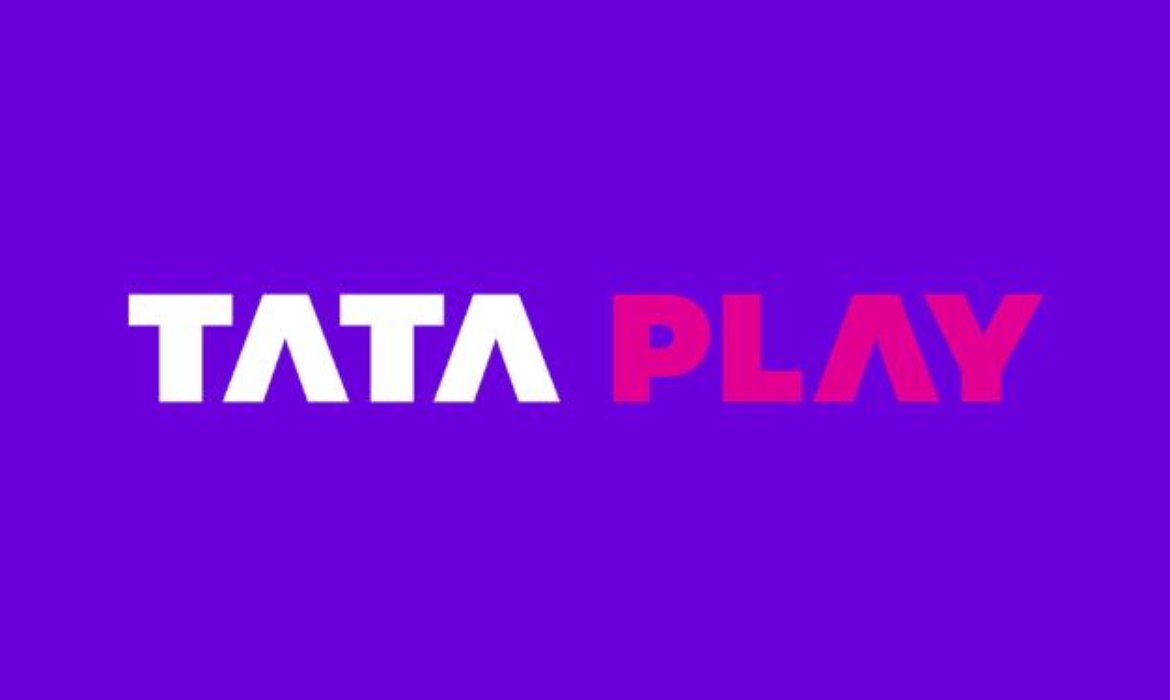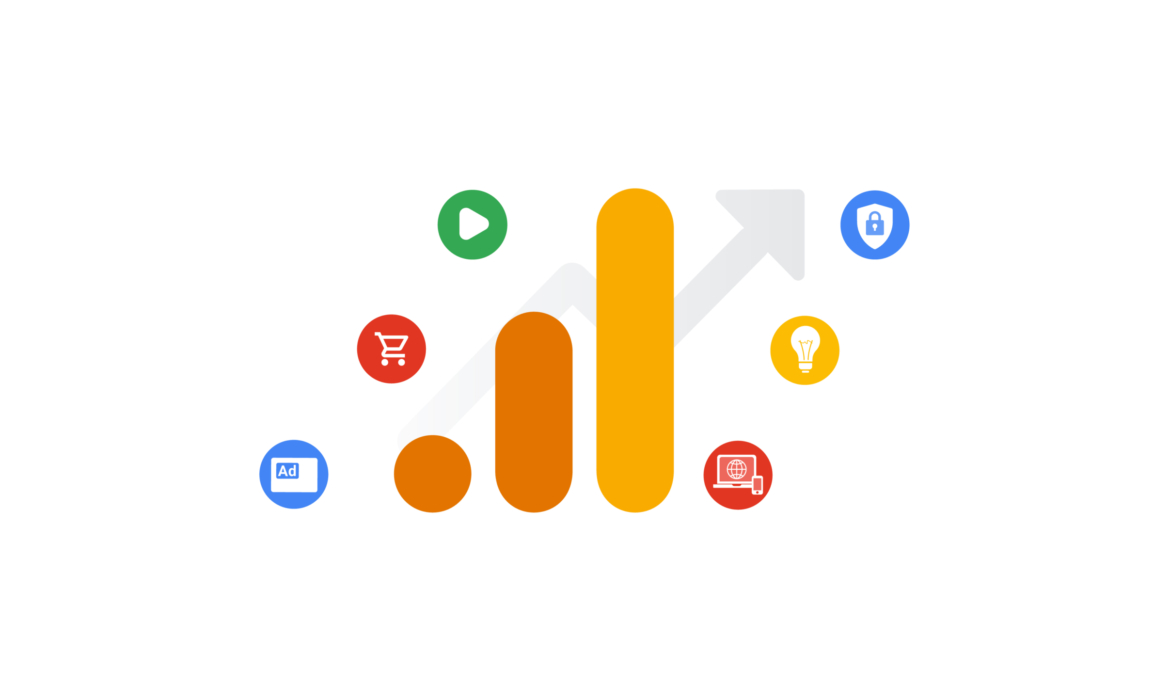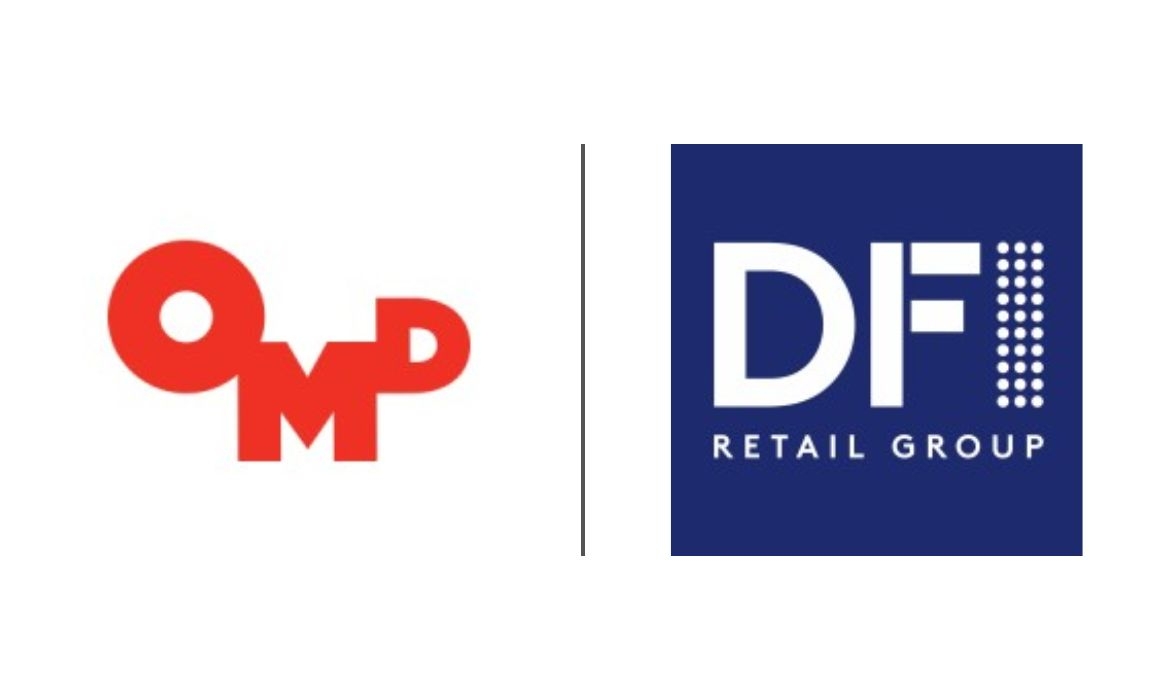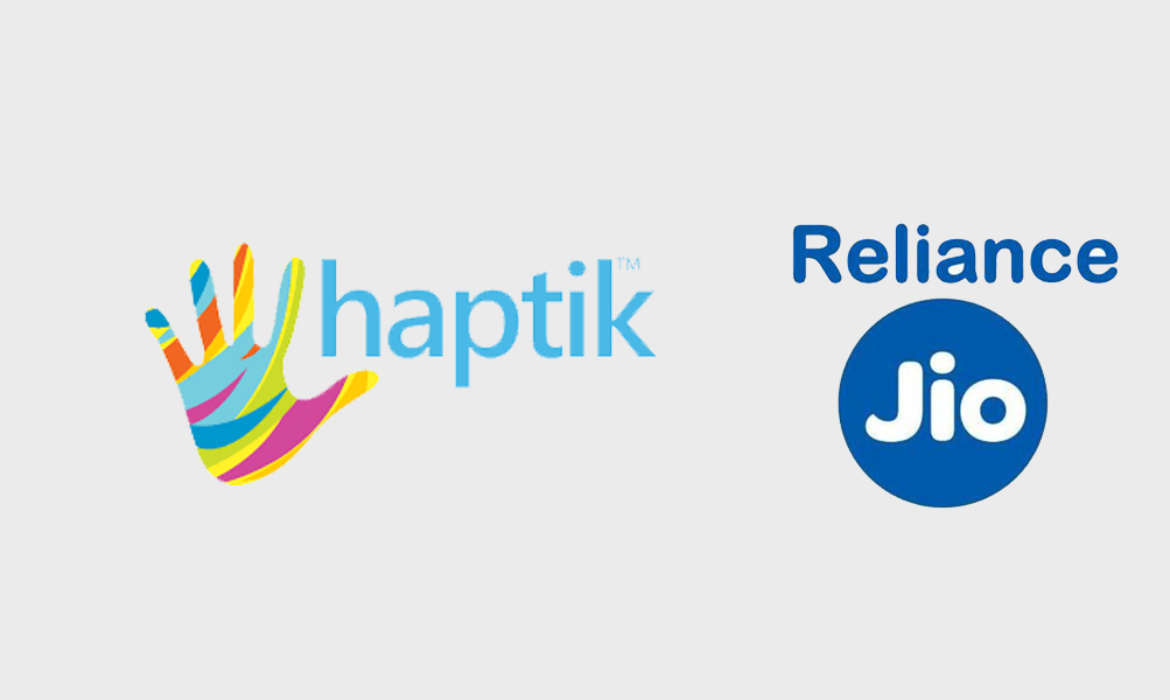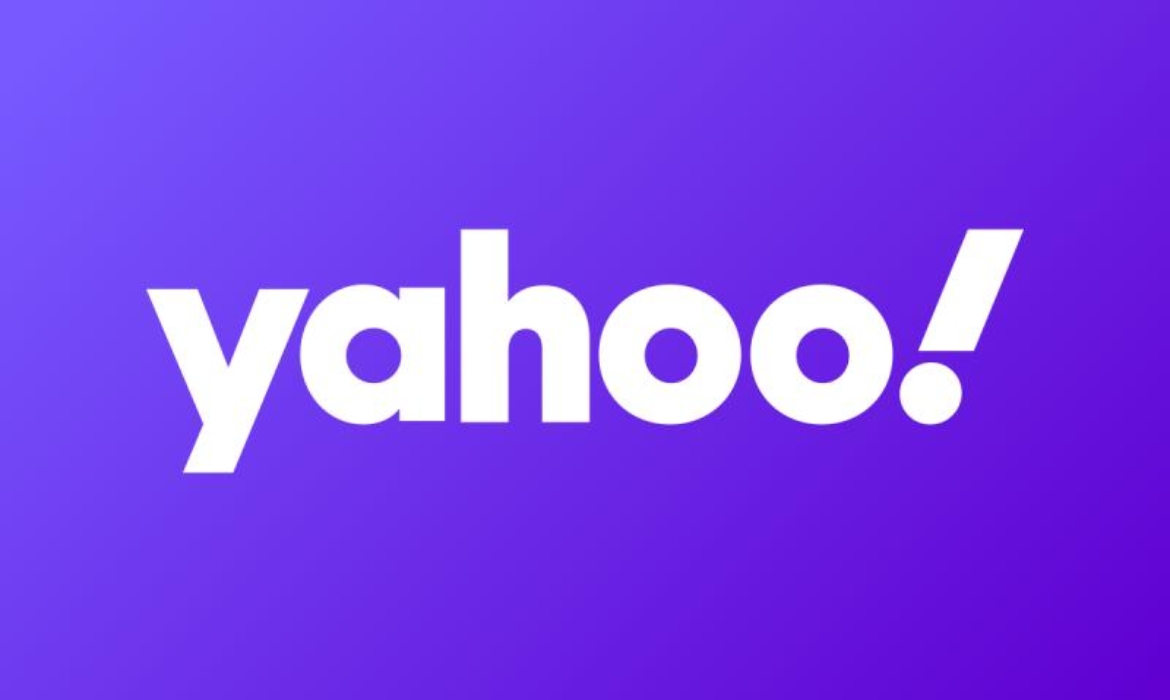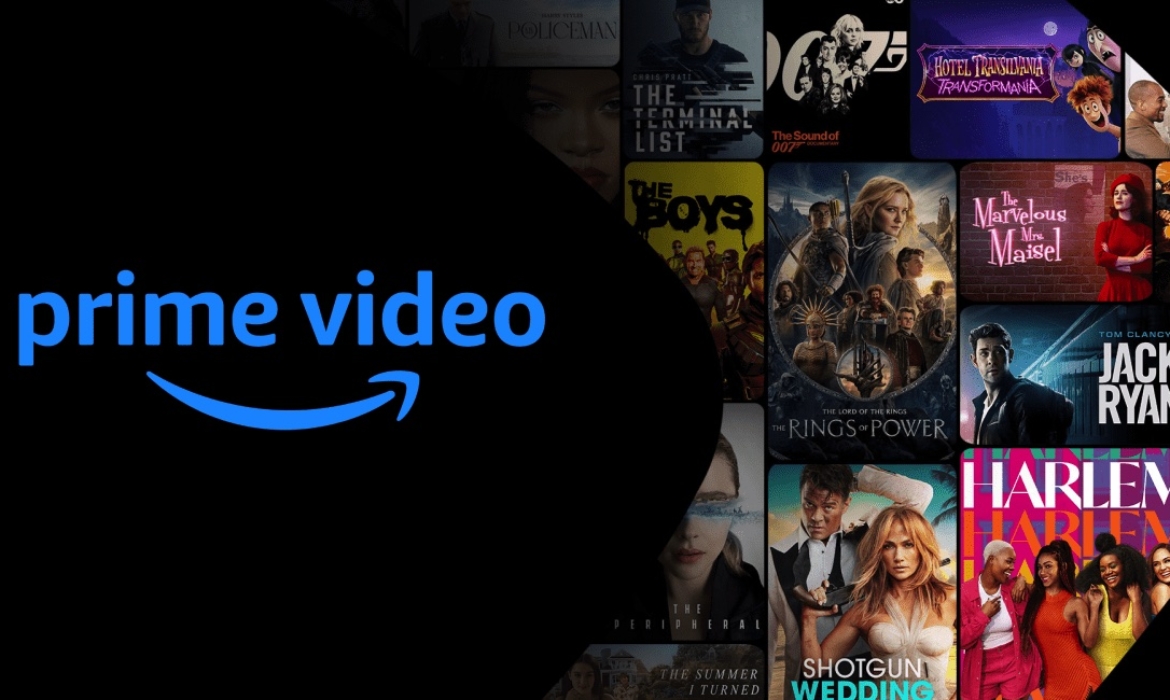DTH Platform Tata Play Announces Addressable Ads for Linear TV
Tata Play, a direct-to-home (DTH) provider, has announced that addressable television ads will be available soon. With the help of addressable TV advertising technology, advertisers may segment TV audiences into distinct groups and show different advertisements to distinct households—even when they are watching the same show. The action is a direct result of newly acquired additional satellite capacity and is the first of its kind in India. Addressable ads have essentially made it possible to achieve media planning on television that is similar to digital. Brands can use audience profiles and geographical filters to more precisely target their linear TV advertisements.
Addressable Ads and Linear TV
With this, media planning on television can now be accomplished digitally. Addressable TV advertisements combine digital media and linear TV. For top-of-funnel delivery, it is necessary. Advertisers can benefit from increased ROI with Tata Play’s Addressable Ads thanks to features like targeting and buying impressions. Now that they have the means, broadcast partners can provide brands with a more relevant, lucrative, and efficient inventory.
Tata Play Collaboration with Invidi and TAM
With this ground-breaking innovation, marketers can now reach their intended audience with total measurability—a first for disconnected boxes. Television advertising will be more interesting and successful thanks to segmentation, which will be based on audience profiles and different geographical cuts. For this project, Tata Play has teamed up with TAM and Invidi. Invidi is the addressable ad technology and campaign management partner while TAM will enable audience measurement and monitoring.
Here’s what they said
Harit Nagpal, chief executive and managing director, of Tata Play, said,
While television delivers the highest advertising reach for brands, it doesn’t offer sharper targeting. With our targeted ad delivery, we can now split a TV spot into multiple beams, each carrying messages to distinctive audience cohorts, as required by the advertisers.
Read More: Samsung Ads Partners with Brightline To Boost CTV Advertising
Google Analytics Introduces 3 New Reports for 360-Ad Platforms
Google Analytics 4 has three new reports available. Users will be able to examine information from Search Ads 360, Display & Video 360, and Campaign Manager 360 in these reports. Those who have correctly integrated these 360-degree ad platforms with Google Analytics 4 can now access them. Furthermore, they can assess the efficacy of campaigns at generating traffic and converting leads. By incorporating these reports into GA4, campaign effectiveness analysis ought to be made simpler. Additionally, it ought to provide advertisers with better outcomes.
The 360-ad platforms
Search Ads 360 is a platform for managing searches. It supports Microsoft Advertising, Baidu, Yahoo Japan, and Google Ads campaigns. Campaign Manager 360 is a tool designed to manage advertising campaigns on mobile and web platforms. It handles ad serving, targeting, verification, and reporting. Display & Video 360 makes it easier to create ads, manage audience data, buy inventory, and improve campaigns.
Campaign performance with the new reports
The performance of campaigns created on the corresponding 360 ad platforms is detailed in each of the three new reports. By choosing the integration-specific summary card that has been added to the Acquisition overview report, users can access these reports. A user will see an option labeled “View Display & Video 360 campaigns,” for example, if they integrate Display & Video 360. The new Display & Video 360 report will open when this option is clicked.
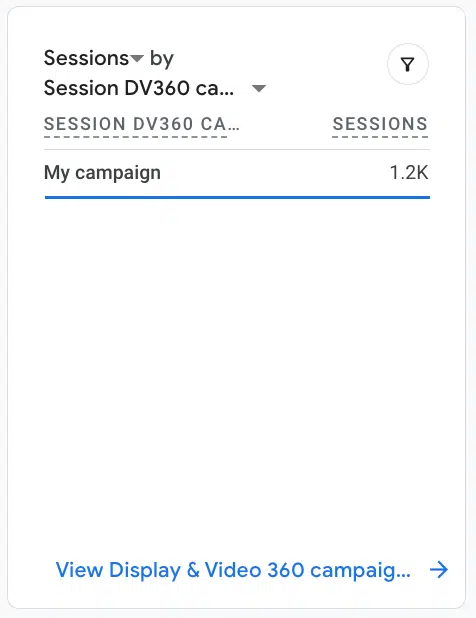
Image credit- Search Engine Land
A user can still access the report from the Acquisition overview report and continue analyzing historical data even if they choose to unlink a buying platform from their property. Additionally, Google Analytics 4 has added new traffic source dimensions to support the new acquisition reports. When a user clicks on a link to Campaign Manager 360, Display & Video 360, or Search Ads 360, these dimensions become available. The event, session, and user scopes offer new dimensions.
Read More: Google Plans to Introduce Programmatic Support for Limited Ads
New Traffic Sources Dimensions
Google has added more traffic source dimensions to the new acquisition reports. When the 360 platforms are connected and used at the event, session, and user level, these dimensions become available. With this update, one can understand cross-channel acquisition data by using cross-channel dimensions, like
Source
Here is where the traffic originates, such as from search engines like Google, social media sites like Facebook, direct users who enter your URL, or one of your newsletters, spring_newsletter.
First-user source
This shows where most of the site’s initial visitors come from. For example, if the first user source is “organic,” this indicates that the users found the website or app through natural search results, such as Google.
Session source
This displays the most popular original source for a group of website user interactions that take place in a given amount of time.
Furthermore, to comprehend cross-channel acquisition data, one can make use of integration-specific dimensions such as Source, Session Source, and First User Source. Then, in order to better understand where the traffic is coming from, they can use new integration-specific dimensions, such as SA360 source, SA360 session source, and SA360 first user source, to analyze acquisition data for a particular buying platform.
Read More: Google Launches Google Ads Data Manager for First-Party Data
Wavemaker wins media mandate for $20 million Allianz account
Wavemaker won the $20 million-rated media mandate for insurance group Allianz. The global pitch saw the company aligning its media operations within GroupM. GroupM has been appointed as the global media partner. Australia’s Spark Foundry by Publicis Groupe, did not take part in the global pitch. PHD made it to the last round of pitching. Wavemaker has had a fantastic year, highlighted by this most recent victory. At the end of November, the agency was named B&T’s Media Agency of the Year, in addition to winning several new accounts.
GroupM reappointed as a global media partner
WPP’s media investment group, GroupM, has been reappointed globally as the media partner. Various GroupM agencies are handling the account both globally and market-by-market. Mindshare is poised to take the lead in two-thirds of markets and throughout the world. Allianz will still receive services from EssenceMediacom in the nine foreign markets where it was the incumbent. The company will receive support from mSix&Partners in Germany, the home base of Allianz. The company also uses Omnicom, Publicis agencies, and Jellyfish as non-GroupM players.
Responsibilities as per the media mandate
The mandate includes full-funnel media strategy, planning, purchasing, and campaign execution. Allianz chose GroupM and its agencies because they could provide deep market-level expertise to support local teams in navigating the complexity of the market while also coordinating efficient and consistent media performance globally.
Here’s what they said
Allianz SE’s head of global brand management and marketing, Christian Deuringe said,
With the new partnership, we are able to deploy our One-Brand strategy perfectly and connect with our customers in an even more relevant way across the entire customer journey. The new set-up combines the strengths of globally managed strategies with tailored roll-outs in local markets. We also expect significant synergies through more standardized processes and performance measurement.
Read More: OMD Defends its Media Responsibilities for DFI Retail Group in APAC
Starcom Middle East Appoints Donnacha Kinsella as Head for Saudi Arabia
Donnacha Kinsella has been named as the new Head of Starcom Middle East, a global media agency operating under the Publicis Groupe Middle East umbrella, in Saudi Arabia. Having previously worked as the lead for strategy, digital, and data on the P&G account, this is Donnacha’s second stint with the Group and Starcom ME.
Donnacha’s extensive experience
With a wealth of experience in media and advertising, Donnacha has worked in a variety of international markets, including the US, Ireland, and the Middle East for more than seven years. With a focus on digital marketing and data leadership, he offers a plethora of experience spanning multiple client verticals, including CPG, Finance, Automotive, and Technology.
Donnacha appointed Head for Starcom KSA
Furthermore, Donnacha has managed media teams for some of Starcom ME’s biggest customers, including P&G and Stellantis. In his most recent position, he was the Global Client Lead at Mindshare. There he was in charge of the Public Investment Fund (PIF) account, which is Saudi Arabia’s sovereign wealth fund. He was instrumental in establishing the operations and strategy of the media and advertising divisions there.
Read More: Publicis Media, UK AOP To Test Privacy-Enhancing Technology (PETs)
Starcom ME’s victories
Recently, Starcom ME won two awards, “Media Agency of the Decade” at the Athar Festival in Saudi Arabia. The second award was the “Most Effective Media Agency” at the MENA Effies.
Here’s what they said
Ramez Zeineddine, CEO, of Starcom Middle East, said,
As a media, data, and technology leader, Donnacha’s work and experience in performance and business outcomes is unparalleled. Equally important, he’s also a champion of people and culture. As Starcom ME continues to drive Growth for our teams, clients, and the industry at large, we’re excited to have Donnacha on board as we further accelerate our foundations in Saudi Arabia.
Donnacha Kinsella, Head of Starcom KSA, said,
I’m excited to re-join Starcom ME and Publicis Groupe ME. Starcom’s ethos and goal to drive human understanding and connection fit well with the ambition and opportunities we see in Saudi Arabia. I’m excited and committed to the growth of both Starcom and the Kingdom. I’m looking forward to working with our team to elevate our existing client relationships and to drive business growth in line with the Saudi 2030 Vision.
Read More: Publicis Names Rajdeepak Das as South Asia CCO; Chairman, Leo Burnett South Asia
VideoAmp Introduces Commingled ID Solutions for Cookie-less Future
VideoAmp has introduced its proprietary commingled identity (ID) solution. It combines top-notch identity assets from several providers into a single graph. It gives content creators and advertisers more confidence that their targeted demographics and advanced audiences are being reached across all platforms. The solution, which is currently available to users of VideoAmp measurement software, is made to maximize accuracy and scalability in reaching sophisticated audiences and targeted demographics across platforms.
VideoAmp’s Commingled ID Solutions
VideoAmp uses clean room technology to safely consume high-quality identifiers like hashed emails, signed-in users, IP addresses, and device IDs in a way that never exposes customers’ personal identifiers to VideoAmp, its partners, or clients. This is VideoAmp’s solution to a future without cookies while maintaining user privacy. With the help of first-party data, VideoAmp’s ID graph supports advanced targeting and gives clients a complete platform-wide solution for connecting and interacting with their most valuable audiences. In comparison to a solution from a single provider alone, it also demonstrates average measurement match rate increases of 79% for pixels and 60% for clean rooms. Although VideoAmp is not the first tech company working with advanced currencies to offer a commingled ID graph, it is purportedly the first measurement company to do so.
Google’s ban on third-party cookies
Google’s impending permanent ban on ID cookies will occur after the majority of the marketing ecosystem has moved on. Ultimately, advertisers have been compelled by necessity to come up with alternate methods for locating (and monitoring) customers who are most likely to purchase their goods or services. A more recent option in the video space comes from the measurement company VideoAmp. Its cleanroom technology now allows different ID sets to be commingled.
Read More: Disney+ Introduces First-Party Audience Targeting, Programmatic Buying Via PMP
Core Benefits
VideoAmp’s commingled ID solution offers the following main advantages:
Enhanced precision and scale
When compared to a solution based solely on one provider, VideoAmp’s proprietary fusion of identity assets heightens both accuracy and scale. Furthermore, it demonstrates average measurement match rate increases of 79% on pixels and 60% for clean rooms.
Unified Audience View
Throughout the journey, VideoAmp’s ID Graph will serve as a single, reliable source of information. It will deliver a consistent image of audiences.
Future-Proof Design
VideoAmp’s ID Graph supports high-quality identifiers through its data clean room, and it is designed with privacy in mind.
Universal Interoperability
With universal interoperability, major identity providers are designed to work with it.
Commingled ID for data assets
The measurement ethos of VideoAmp is to commingle data assets. It will provide higher levels of precision, efficiency, and accuracy than could be possible from separate data sources. One of the first companies to integrate big data was VideoAmp. It developed and refined the process of fusing Set-Top-Box and Smart TV. This resulted in one of the most extensive and reliable datasets available today. The company has experienced tremendous momentum in its adoption as a media currency among publishers and advertisers. This is because VideoAmp’s measurement solutions are accurate and are now supported by the best identity solution in the industry.
Here’s what they said
Megan Pagliuca, Omnicom Media Group North America’s Chief Activation Officer said,
The capability to directly match our census-level Omni ID with VideoAmp’s new commingled identity solution, will deliver better scale and more accurate plans for our clients by improving match rates with our partners on advanced audiences. OMG’s clients will now be able to dive deeper, beyond demographics, with some of the most premium content producers in the world, enabling them to deliver more relevant ads to the right consumers.
VideoAmp’s Chief Technology Officer, Tony Fagan stated,
Every use case for advertising measurement and currency today hinges on identity as the lynchpin for quality, accuracy, and effectiveness. With the advancements and speed of innovation in this space, we wanted to implement an identity solution that not only keeps up, but sets a new standard for targeting and precision. The better we get at identity, the better we get at everything. We didn’t find a solution that accounted for the gaps and discrepancies we were seeing, so we created one. The launch of our commingled identity solution means more impressions delivered to advertisers’ intended audiences, so they can deliver better ROI.
Read More: Dentsu Pioneers Audience Acquisition with VideoAmp Partnership
OMD Defends its Media Responsibilities for DFI Retail Group in APAC
Multinational advertising company OMD has effectively defended its media account for DFI Retail Group, a major pan-Asian retailer with locations in Singapore, Malaysia, Indonesia, and Hong Kong. After a competitive pitch, the agency will continue to handle its media responsibilities in APAC. The account, which is valued at almost $40 million, covers DFI’s subsidiary brands, including Mannings, Ikea, and Cold Storage.
OMD’s Media Duties for DFI Retail Group
During the pitching process, OMD was up against Mindshare, Dentsu, Publicis, and Mediabrands. With $1.2 billion in billings from 122 accounts, the agency led the global advertising agency rankings for new business activity from January to August 2023. This year, the agency has been extremely successful. In 2019, DFI Retail gave OMD its media mandate for the first time. Most recently, Bacardi, a spirits company, awarded OMD the global media account. After a competitive review, British fashion house Burberry also selected it in December 2022 to handle its worldwide media planning and buying responsibilities.
Read More: Amazon Ads and IPG Mediabrands Ink 3-year Deal for Upcoming Prime Video Ads
OMD’s recent wins
One of its most recent victories was the $187 million global account for the biggest privately held spirits company in the world, Bacardi. Nevertheless, OMD also lost many significant accounts. For instance, the $30.8 million French spirits brand Remy Cointreau in China. Another account was the $6.7 million Australian pharmaceutical company (a confidential client).
DFI Retail Group Collaborations
However, DFI Retail Group awarded M&C Saatchi Singapore a three-year contract with a one-year optional extension. The contract covered both Singapore and Malaysia in October 2022, capping their regional social pitch. DFI’s account in Malaysia will be managed by M&C Saatchi Malaysia. M&C Saatchi Malaysia and Singapore will collaborate to handle the work under the two verticals of digital strategy and creative for DFI’s SEO, social media, and electronic dance music initiatives. The account is already under work.
Read More: Wavemaker Defends the Media AOR For L’Oréal in Thailand
Jio Haptik Introduces Contakt, A Gen-AI Customer Experience Platform
Reliance Jio Infocomm’s artificial intelligence startup Haptik has introduced a generative AI platform specifically designed to help clients develop virtual assistants and back-end information support. Large language models (LLMs) drive the “Contakt” platform. It is a generative AI-powered customer experience suite that has already seen several pilot deployments and will continue to expand in the future. With Contakt, enterprises can now deliver streamlined and efficient support experiences at scale. It enables teams to understand and respond to customer queries in a nuanced and context-aware manner, fostering conversations that are both efficient and tailored to individual needs.
Jio Haptik’s Contakt- a generative AI-powered suite
The platform’s goal is to improve the user experience for every customer throughout their entire lifecycle, making it possible for anyone to use a solution similar to ChatGPT. Contakt is an AI platform that generates material and helps clients create virtual assistants and back-end support. Through chat interfaces, clients will be able to accept text, audio, and image queries, making use of the default capabilities of OpenAI’s Generative Pre-Trained Transformer (GPT)-3.5 and GPT-4 models. Clients will be able to access various LLMs (Large Language Models) nonetheless.
Read More: Amazon Enters Generative AI Scene With Its Chatbot “Q”
Generative AI components
The three main components of generative AI are intelligent analytics, agent co-pilot, and generative AI assistant.
Generative AI Assistant
The basis for creating an AI assistant utilizing unstructured data is provided by the generative AI assistant feature. The unstructured data includes PDFs, CSVs, blogs, webpages, and other sources. When combined with web APIs and CRM, the AI Assistant can produce dynamic responses and handle a broad variety of customer inquiries. During the pre-sales phase of the customer journey, it can provide conversational buying advice, assisting customers in making well-informed purchase decisions.
Agent Co-pilot
As support agents interact with customers, they use generative AI to give them summaries, suggested answers, and recommendations in real time. In addition to increasing agent productivity, this also significantly speeds up response times, which benefits customers.
Intelligent Analytics
An analytics engine that offers insightful data on the performance of bots and agents. It is in addition to AI-driven suggestions to boost customer service effectiveness. It enables the creation of personalized reports and dashboards and provides a unified view of all relevant metrics.
Performance tracking
According to the company, the analytics engine in the Contakt suite makes it easier to track the performance of bots and agents. It optimizes for better customer outcomes with the help of AI-powered recommendations. Aakrit Vaish, the chief executive of Haptik, stated that the introduction of a separate vertical for this generative AI platform was prompted by the market demand for better chatbot offerings. The initiative was taken even though Haptik was already experimenting with generative AI and the demand for “smarter” conversation platforms.
Read More: Omnicom Signs Generative AI Licensing Agreement with Getty Images
Contakt’s features are truly meant for Enterprise Scale.
Contakt is supported by a state-of-the-art natural language processing (NLP) engine, a robust integration ecosystem, and special scaling and security capabilities.
Scalability
Contakt’s user-friendly interface makes it easy to manage large customer volumes. For improved customer experiences, omnichannel support can be optimized across 10+ channels, communication in more than 100+ languages, and seamless integration with 100+ platforms. These include social media, agent systems, payment gateways, and software that is compatible with APIs.
Security
Contakt guarantees the utmost in data protection and conforms to international security guidelines. These include ISO, HIPAA, GDPR, CCPA, and SOC 2 standards. Sensitive customer data is protected and kept private thanks to this dedication to security.
NLP Engine
Contakt’s Gen AI-powered NLP engine, integrated with OpenAI, is capable of comprehending and interpreting the nuances of human language. In addition, it recognizes intent, manages ambiguity, has tailored conversations, and preserves context to promote more organic, human-like interactions.
Haptik’s statement comes after Yellow.ai, a chatbot platform’s announcement on November 20, 2023. It stated that it was launching a chatbot platform powered by generative AI in association with Amazon Web Services.
Read More: JioAds Launches Picasso.AI, Its Proprietary Advertiser-Focused AI Tool
Yahoo DSP Leverages Both AI and First Party Data For Campaign Advancement
The central AI suite that powers performance-based solutions within the Yahoo DSP, Yahoo Blueprint, was introduced by Yahoo Advertising. Yahoo Blueprint is powered by more than 335 million globally logged-in Yahoo users. It improves decision-making, simplifies AI, and acts as a result-driven guide for advertisers at every stage of the campaign lifecycle. Together with Fortune 500 brand partners and agencies, this new AI suite has launched. With the use of valuable first-party data and state-of-the-art AI technology, Blueprint provides real-time optimization recommendations that enable advertisers to meet their campaign goals and determine the lifetime value and conversion potential of each user.
AI for Yahoo DSP
Yahoo’s demand-side platform (DSP) will benefit from artificial intelligence in order to enhance data visualization, forecasting, optimization, and predictive audiences. Using first-party data, the Blueprint tool can find customers who match the expected value of the brand’s current customer base. Using Yahoo’s algorithmic forecasting tool Omniscope, it allows advertisers to predict the incremental reach of connected television (CTV) advertisers against linear audiences.
Yahoo’s new strategy reflects how the programmatic market is changing. Yahoo left SSP Business because a large number of publishers can now effectively monetize their inventory through programmatic changes to header-bidding wrappers. They therefore depend less on publisher tech platforms. In a similar vein, the introduction of the Blueprint is a reaction to growing buy-side sophistication.
Omniscope – Blueprint’s forecasting tool
One of Yahoo Blueprint’s primary algorithmic forecasting tools, Omniscope, lets advertisers plan and evaluate expected performance and reach across a range of channels, exchanges, formats, and targeting parameters. It assesses how adjustments to targeting parameters can affect scale, projected spending, and winnable impressions, and it facilitates mid-campaign planning and optimization.
Yahoo DSP uses location and purchase data
Yahoo’s solution leverages location and purchase data from users logged in with Yahoo email addresses, as well as first-party behavioral data sourced from their owned-and-operated websites. Yahoo DSP clients can expect better performance with Yahoo Blueprint, leveraging years of AI experience to bid on the right impressions, optimizations through AI co-pilot that suggest campaign enhancements and auto-optimize, and an improved and straightforward user interface (UI) that helps advertisers and increases efficiency. Yahoo’s DSP has long possessed AI capabilities, but Blueprint is able to present algorithmic recommendations for several campaigns on a single dashboard.
Read More: Yahoo Advertising Launches New Suite of Premium Ad Formats Edge-2-Edge
Yahoo Blueprint benefits Yahoo DSP clients
- Better outcomes: Sturdy performance that makes use of years’ worth of AI experience to bid on the appropriate impressions at the appropriate time and cost.
- Self-assurance in optimization: AI copilot that suggests ways to improve campaigns and automatically optimizes to fulfill advertisers’ objectives.
- Efficiency and Simplicity: A more efficient and straightforward user interface that directs advertisers.
Blueprint workflow
In order to improve performance, Blueprint first considers the advertiser’s Key Performance Indicators (KPI) before making suggestions for target audiences or Private Marketplaces (PMPs). These suggestions are accompanied by forecasts of the effects that various audience targeting techniques will have on the designated KPIs. Customers are free to choose whether or not to use these recommended campaign tactics.
First-party data advantage
All Yahoo DSP clients have easy access to the blueprint via the current dashboard. New data visualizations, audience insights, campaign forecasting tool integration, predictive audience modeling, and customer lifetime value features are all introduced during the first phase of implementation. Yahoo intends to release additional information in the upcoming summer. Additionally, when it fits the needs of a particular campaign, Yahoo’s Backstage direct publisher connection is incorporated as a supply source for Blueprint optimization. Yahoo emphasizes how important its first-party data pools are. It is easier to comply with privacy regulations when first-party data that has been collected with user consent is used.
Transparency and accountability
Even though AI-driven optimization tools are very beneficial, there are still transparency issues. This is especially when it comes to competing products like Advantage+ from Meta and Performance Max from Google. Yahoo is dedicated to encouraging candid dialogue with advertisers about the information that goes into its algorithmic recommendations. Notably, when it comes to executing campaign modifications, advertisers have the last word.
Read More: Yahoo and LiveRamp Expand Partnership, Scaling Addressability
Google Plans to Introduce Programmatic Support for Limited Ads
In Q1 2024, Google plans to introduce programmatic support for Limited Ads. The purpose of this new feature is to minimize the use of personal data for ad personalization by giving publishers the ability to serve ads to consumers in a restricted manner. Limited ads prevent personal information from being gathered, shared, and used for personalizing ads. Consequently, some ad features are not available for Limited Ads, including interest-based categories, remarketing, and audience targeting. Publishers who choose to use this new programmatic assistance will be able to profit from the demand for contextual programmatic content coming from
- Google Demand
- Authorized buyers
- Open bidding
- SDK Bidding.
With programmatic demand, this feature gives publishers the opportunity to potentially boost revenue. When choosing whether or not to use invalid traffic-only cookies, it is advisable to consult the legal department for guidance as there may be legal ramifications.
What are limited ads?
In essence, limited ads allow publishers to offer consumers a restricted selection of ad formats. Limited ads accomplish this by disabling the gathering, sharing, and utilization of personal information for ad personalization. Some ad features are not available for limited ads because they disable all personalization of ads that need a local identifier. Among the primary features of the unavailability of ads are:
- Any sort of ad personalization
- Audience targeting
- Remarketing
- Interest-based categories
- Mobile carrier targeting
- Conversion (and in-app conversion) metrics.
Read More: Amazon Prime Video to Introduce Limited Ads in 2024
What is invalid traffic?
Any traffic that is not produced by a real user with a legitimate interest is considered invalid traffic. This can include:
- Accidental clicks caused by intrusive ad implementations
- Fraudulent clicking by competing advertisers.
- Advertising botnets and more.
It’s crucial to remember that Google continues to mandate, without requiring user consent, the use of local storage for programmatic demand and invalid traffic detection-only cookies. Publishers are not required to utilize the new programmatic feature, though. Google recognizes that publishers are subject to different laws and regulations regarding user consent. It is therefore recommended that publishers check with their legal departments to see if this programmatic feature complies with their policies and specifications.
Why do publishers need to consider this?
The new programmatic feature will be enabled by default as soon as it becomes available. Publishers will, however, be able to disable the feature if they so choose. Publishers must consider the possible effects of restricted ad personalization on user experience and revenue generation. Less relevant advertisements may be shown to users, which could affect how they view the publisher’s website. In addition, the lack of personalization could lead to a decline in engagement and a decrease in additional revenue from Limited Ads.
Programmatic bidding on limited ads is now an optional feature on Google since publishers are legally liable for the tools they employ. Moreover, opinions on whether user consent is required for local storage and invalid traffic-only cookies may differ. It implies, in a way, that there isn’t a solution that works for every publisher. Google suggests that in order to decide whether or not to use the new programmatic feature, publishers should consult with their own legal teams.
In summary, publishers should proactively review their current policies and procedures regarding user consent, even though Google has not specified a specific launch date for this feature. If qualified, publishers can decide if using this enhanced programmatic ad-serving feature fits their unique requirements and objectives.
Read More: Google Release Updated Ad Review Centre for its Ad Platforms
Amazon Ads and IPG Mediabrands Ink 3-year Deal for Upcoming Prime Video Ads
Amazon’s video advertising division is about to take off. To support the launch of Prime Video Ads next year, Amazon Ads and IPG Mediabrands have inked a three-year deal. When limited commercials for TV series and movies on Prime Video debut in early 2024, the partnership will use Prime Video Ads to connect brands with relevant audiences. With this new offering, IPG Mediabrands is the first media holding company to collaborate with Amazon Ads. The first countries where Prime Video Ads will be available are the United States, the United Kingdom, Germany, and Canada. Later this year, France, Italy, Spain, Mexico, and Australia will be added. In 2024, IPG Mediabrands will provide support to each of these nations.
Key features of Amazon Prime Video Ads
Along with first-look opportunities to test new models and ad formats, as well as content sponsorships in each region, Amazon Ads and IPG Mediabrands will work together to help brands incorporate global Prime Video audiences into their media strategies. With the help of Amazon’s first-party shopping and entertainment insights, IPG Mediabrands advertisers will be able to connect with and engage streaming audiences and generate relevant ad experiences for Prime Video viewers. Additionally, they will be able to use Amazon’s data and research regarding viewers’ viewing and shopping habits to guide their marketing strategies.
How will advertisers benefit from Amazon Prime Video ads?
In September, Amazon announced that Prime Video, one of the last popular streaming services to forgo putting frequent commercial breaks in its films and television series, would begin doing so early the following year. An estimated 115 million people in the US will see Prime Video ads each month. Amazon seeks to have noticeably fewer advertisements than other streaming TV services and traditional linear TV. Simultaneously, it will give advertisers reach, frequency, and the ability to customize their messages, . Currently, a $14.99 monthly Prime Video subscription is included in the $139 annual Prime Subscription. All Prime members will transition to an ad-supported model as part of the plan, but they can choose to continue watching Amazon Prime Video without advertisements for an additional $2.99 per month in the U.S.
The introduction of Prime Video’s ad tier has been eagerly anticipated by advertisers, especially because of the immediate and sizable audience it will provide. In contrast, other streaming services have had difficulty increasing the proportion of their user base that is ad-supported. To help them create relevant ad experiences for Prime Video audiences, advertisers through IPG Mediabrands will also benefit from Amazon’s insights. These are generated through its shopping and entertainment platforms.
Read More: Amazon Enters Generative AI Scene With Its Chatbot “Q”
Competitors serving the ads in the streaming service market
Amazon is making a big advertising push now that several competitors have joined the market. This year, Netflix even tried an upfront sales model. However it has struggled to provide the volume of impressions that many large advertisers claim they require. Additionally, the executive team in charge of Netflix’s outreach to media buyers and marketers has been reorganized. Disney has also allowed advertisements on Disney+.
Amazon Prime – A one-stop destination for entertainment
Prime is a one-stop entertainment destination that offers customers a vast selection of premium entertainment in a single application. Customers can find all of their favorite films and television shows on Prime Video. It can be live sports, entertainment from Amazon MGM Studios and other studios, third-party channels that are available as an add-on subscription through Prime Video Channels. Moreover, they can also find movies and series that can be rented or purchased through the Prime Video store.
IPG Mediabrand’s wide range of iconic clientele
A division of Interpublic Group, IPG Mediabrands is responsible for media and marketing solutions. IPG Mediabrands oversees more than $47 billion in marketing investment globally on behalf of its clients. This is across its full-service agency network, UM, Initiative, Mediahub, and through its award-winning specialized business units, Healix, Kinesso, Magna, Mediabrands Content Studio, Orion Holdings, Rapport, and the IPG Media Lab. Among the many well-known and iconic brands in the world are those from IPG Mediabrands’ diverse portfolio of industry sectors, which includes automotive, e-commerce, direct to consumer and e-commerce, retail, hospitality, food and beverage, pharma, health and wellness, entertainment, financial services, energy, toys, and gaming. Some of their clientele are well-known marketers such as Johnson & Johnson, CVS, American Express, Mattel, Henkel, and General Mills.
Read More: Amazon Announces Publisher Cloud to Plan Programmatic Deals in Amazon DSP
Here’s what they said
Eileen Kiernan, global CEO of IPG Mediabrands said,
Amazon’s latest offering brings a first-to-market opportunity for our clients to reach consumers at the category level in a comprehensive, scalable way—from culture and content to commerce and shoppable experiences. We are excited to play a role in this game-changing addition to the streaming TV marketplace and serve as Amazon’s anchor partner as they bring Prime Video ads to life.
Alan Moss, vice president of global sales for Amazon Ads added,
From our first conversations, IPG Mediabrands has leaned in so that their clients can be among the first brands to engage with the Prime Video streaming audience across the nine countries we’ll serve starting in early 2024. When we begin introducing limited ads into Prime Video shows and movies, Prime Video will be one of the largest premium ad-supported services in most countries where we operate. This means we can simultaneously offer brands unmatched reach and frequency to help them achieve their business goals.
Dani Benowitz, global president of MAGNA, the investment and intelligence arm of IPG Mediabrands stated,
As longtime partners of Amazon Ads, we are thrilled to participate in a global deal of this scale across all of the countries in which Prime Video ads will launch throughout 2024. The ability to access the entire Amazon streaming TV product suite is an added benefit for both endemic and non-endemic brands within our broad client portfolio.
Read More: GroupM and Amazon Ads Partner for Creator-Led Shoppable Format

